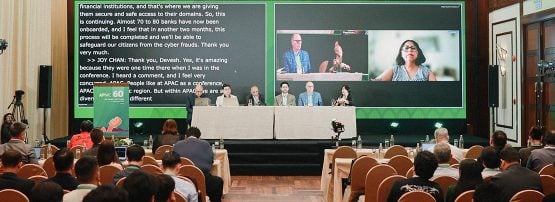
As global Internet governance debates intensify with the WSIS+20 review process ongoing, the need for strong technical voices has never been greater.
At APNIC 60, the Cooperation SIG session “Bridging the Gap: Technical Voices in Global Internet Policy” brought together stakeholders from across the Asia Pacific to explore how technical expertise can more effectively inform global policy discussions.
Why this matters
The Internet’s foundation is inherently technical — built on open protocols, community-driven standards, and infrastructure stewarded by network operators, engineers, and researchers.
Yet pressure from governments to centrally control how the Internet is governed through intergovernmental and multilateral forums continues to persist. This session aimed to address that imbalance by strengthening dialogue between the technical and policy communities.
Key themes and challenges
Panellists discussed how technical realities are often misunderstood by policymakers. From encryption to routing security, technical decisions can shape policy outcomes, just as policy can influence technical choices.
When policies are developed without validation from technical experts, the results can include fragmentation, inefficiencies, or even new security vulnerabilities.
A region of diversity and opportunity
The Asia Pacific region is uniquely diverse in its levels of technical maturity, policy frameworks, and civil society engagement. This diversity presents both challenges and opportunities for creating inclusive mechanisms that elevate local technical voices in global debates.
However, several persistent barriers limit effective participation by the technical community in global policy forums, including:
- Limited exposure to multilateral policy processes
- Resource constraints that restrict participation, especially from the Global South
- Communication gaps where technical jargon doesn’t easily translate into policy language
To help bridge these gaps, panellists proposed several approaches:
- Plain-language advocacy: Explaining complex technologies through clear, real-world examples
- Coalitions like the Technical Community Coalition for Multistakeholderism (TCCM) provide a coordinated platform for joint advocacy
- Partnership with NOGs and IGF/NRIs: Encouraging technical leaders from Network Operator Groups (NOGs) to engage actively in the Internet Governance Forum (IGF) and National and Regional Initiatives (NRIs).
Speakers representing diversified stakeholders emphasized several key points:
- The importance of ongoing participation — not just during high-level summits
- The need for mutual understanding through training engineers in policy awareness and policymakers in technical literacy
- Recognition of the technical community as a distinct stakeholder group in WSIS+20 outcomes and the Global Digital Compact (GDC)
As one speaker aptly put it:
“If the Internet is a shared global resource, then every stakeholder — including the engineers and architects of that resource — must have a seat at the table.”
Looking ahead
WSIS+20 presents a once-in-a-decade opportunity to reaffirm the multistakeholder model and ensure technical perspectives remain central to Internet governance.
Sessions like this Cooperation SIG aim to strengthen the bridge between the technical community and policy, helping to ensure that global Internet decisions remain open, inclusive, and informed by those who build and operate its underlying infrastructure.
Bikram is the Head of Retail Deposit of the Sanima Bank Ltd, the President of Nepal Internet Foundation in Nepal, and the APNIC Policy SIG Chair.
The views expressed by the authors of this blog are their own and do not necessarily reflect the views of APNIC. Please note a Code of Conduct applies to this blog.
